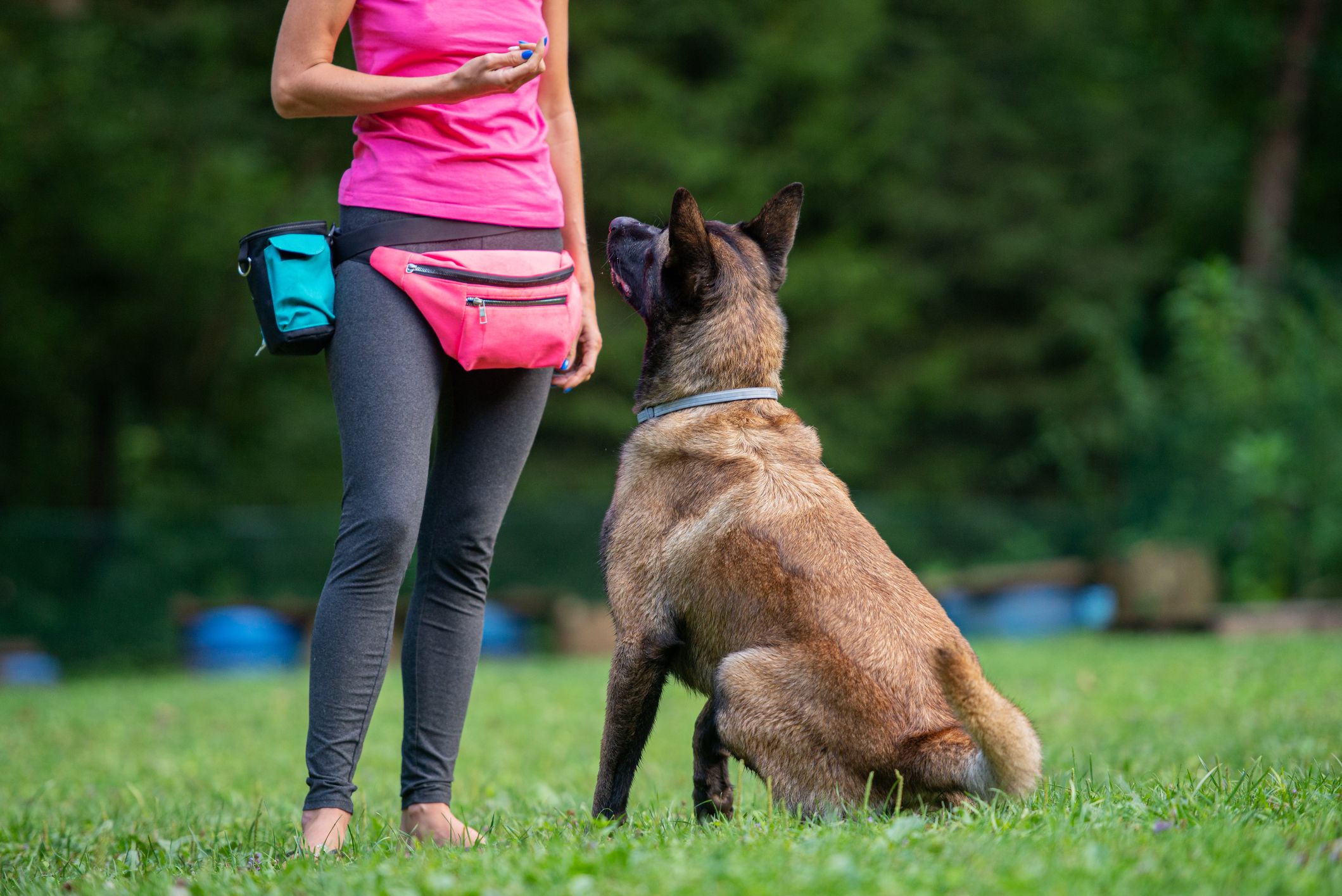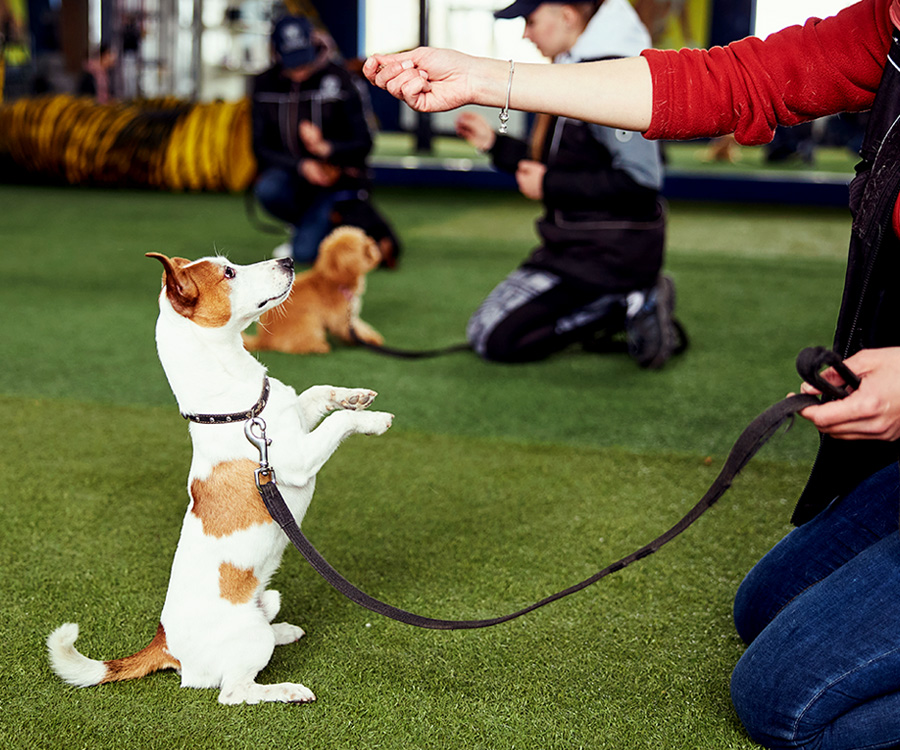Effective Dog Training Tips to Correct Common Behavioral Problems
Effective Dog Training Tips to Correct Common Behavioral Problems
Blog Article
Novice's Overview to Successful Canine Training in the house
Successfully training a pet at home calls for a nuanced understanding of canine habits and efficient communication techniques. Developing clear training objectives, utilizing high-grade benefits, and keeping consistency across family participants are crucial aspects. Incorporating training right into daily routines can improve both interaction and retention.
Understanding Dog Actions
Recognizing dog actions is essential for effective training and fostering a harmonious partnership in between human beings and their canine friends. Dogs communicate mostly through body language, articulations, and face expressions, making it crucial for owners to interpret these signals precisely. Acknowledging habits such as tail wagging, growling, or cowering can provide insights right into a pet dog's emotional state and intentions.

Common behavioral concerns, such as aggression, anxiousness, or excessive barking, typically originate from misunderstandings or unmet demands. Observing and resolving these concerns quickly can stop acceleration and make certain a favorable training experience. By fostering a deep understanding of pet behavior, owners can tailor their training methods to match their canine companions, eventually bring about a mannerly and pleased pet dog.
Important Educating Devices
A well-equipped training area can dramatically enhance the performance of dog training in your home. Necessary training devices guarantee that both the instructor and the pet can take part in effective sessions that foster understanding and bonding.

Investing in a sturdy leash and a comfy, well-fitting collar or harness is important for safety and control. These devices assist establish limits and ensure the pet continues to be safe during training. Furthermore, a designated training location, without disturbances, aids focus for both the trainer and the canine.
Training aids such as training pads, cones, or dexterity equipment can likewise improve the experience by presenting range and obstacles. Having a notebook or electronic app for tracking development can be invaluable, enabling you to keep in mind successes and areas for renovation. Making use of these vital tools will certainly develop a positive training atmosphere and lay the structure for reliable discovering.
Creating an Educating Regimen
Developing a regular training routine is vital for reliable pet dog training in your home. A well-structured regular not only assists in strengthening wanted actions yet also provides your canine with a sense of protection and predictability. To develop an efficient training regular, begin by recognizing specific training objectives, such as basic commands, chain strolling, or house-training.
Choose an assigned time daily for training sessions, ideally when your pet is sharp and responsive. Sessions must be short, around 5 to 15 mins, to keep focus and stop exhaustion. Uniformity in timing and setting will boost your pet's understanding experience.
Integrate training into everyday tasks to enhance abilities. Practice commands during strolls or mealtime, which integrates learning into all-natural regimens. Furthermore, stay versatile and change the routine as necessary, suiting your pet's energy levels and state of mind.
Favorable Support Strategies
Favorable support methods are essential to reliable canine training, advertising desired actions with rewards as opposed to punishment. This technique makes use of favorable stimulations, such as treats, praise, or playtime, to motivate dogs to duplicate details activities. The cornerstone of this strategy is timing; rewards must be provided quickly complying with the wanted habits to create a clear organization.
When executing positive reinforcement, it is important to choose incentives that are encouraging for your pet dog. High-value treats, such as tiny pieces of chicken or cheese, can be specifically efficient during training sessions. In addition, differing the rewards can maintain your pet dog's rate of interest and interest.
Begin with basic commands, like "sit" or "remain," and progressively development to more intricate tasks. Consistency is key; make sure that all member of the family use the exact same commands and benefit systems navigate here to stay clear of confusion.
Moreover, it is important to remain individual and stay clear of irritation. Canines, like humans, find out at their very own speed. By promoting an encouraging training environment via positive reinforcement, you can boost your pet's understanding experience while strengthening the bond in between you and your hairy buddy, laying the groundwork for effective training results.
Common Training Obstacles
While training a canine in the house can be a rewarding experience, it frequently includes a collection of typical difficulties that can test both patience and consistency. One prevalent problem is disturbance. Pets he has a good point might become conveniently sidetracked by sounds, motions, or even fragrances in their atmosphere, making it challenging to maintain their emphasis throughout training sessions.
One more obstacle is disparity in commands and reinforcement. It can confuse the pet dog and hinder progress if family members make use of various cues or rewards. Establishing a unified approach is crucial for reliable interaction.
Furthermore, pets can experience irritation or tension, particularly if they do not understand what is expected of them. This can result in undesirable behaviors, such as barking or eating.
Finally, the timing of reinforcement is vital (Dog training). Delayed benefits can diminish the efficiency of favorable reinforcement, as dogs might fail to connect the habits with the incentive
Getting over these difficulties calls for commitment, clear interaction, and an organized training plan. Recognizing and dealing with these usual barriers will certainly lead the way for a more successful and satisfying training experience in your home.
Final Thought
Finally, successful pet dog training in your home requires a comprehensive understanding of canine actions and efficient communication approaches. By developing clear training objectives and making use of high-quality deals with together with positive support, the training process ends up being much more satisfying for both the trainer and the canine. Perseverance, versatility, and consistency are necessary parts that assist in knowing. Ultimately, integrating training right into everyday regimens enhances the bond in between pet dog and proprietor, making the experience both get more delightful and effective.
Establishing a constant training regimen is important for effective canine training at home.Positive reinforcement methods are basic to effective pet training, advertising desired actions through rewards rather than penalty (Dog training). By cultivating a supportive training setting through positive support, you can boost your canine's learning experience while strengthening the bond in between you and your furry companion, laying the groundwork for successful training outcomes
In conclusion, effective canine training at home requires an extensive understanding of canine actions and efficient interaction methods. By establishing clear training goals and making use of top quality deals with together with positive support, the training process becomes a lot more fulfilling for both the pet and the trainer.
Report this page